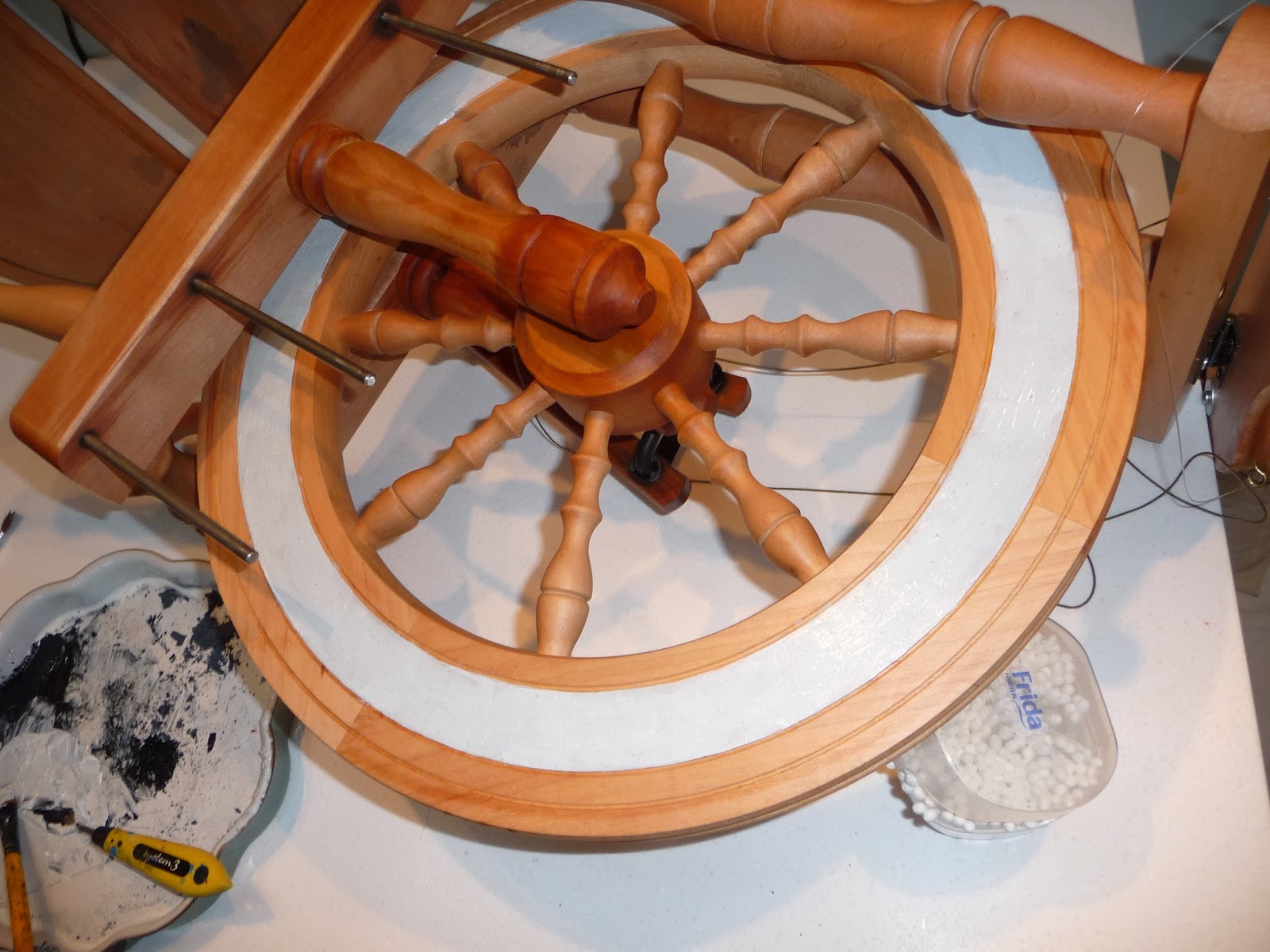Out of the night that covers me,
Black as the Pit, from pole to pole,
I thank whatever gods may be
For my precipitated woad.
Not knowing how much woad was stored, in advance, I soaked a wide array of yarn and fleece, undyed or disappointingly beige and ripe for a spot of experimental overdyeing. I supposed that just stirring my precipitate into a little water would be the equivalent of making a paste with woad powder and I alkalinised it with dissolved soda ash, as per instructions which have worked out fine, before.
Instead of becoming a dark cloud, flooding from my jam jar into the dye bath water, the woad precipitated straight back down. Trying to squish and stir it up, no amount of parboiling my arm in water at 50 degrees centigrade made a bit of difference. I'd like to say that In the fell clutch of circumstance, I have not winced or cried aloud. In truth, I cannot hold a candle to William Ernest Henley.
I did salvage some, by pouring the whole pot through a sieve, lined with a piece of silk. Lots went down the plughole. All that effort, growing and saving woad, to end like this. Under the bludgeonings of chance, I took the dog down the beach to scream with the seagulls. The dog is deaf and quite unperturbed. Home, much restored.

 After I had flaked the dried woad back off the silk, I came across an article about making your own paint. It described grinding mineral pigments together with linseed oil. Got some of that in the garage. Woad paint seemed a better option than another attempt at dyeing. Mixed up, the colour was darkest indigo and the paint needed to be thinned with a fair bit of oil to go on smoothly with a brush.
After I had flaked the dried woad back off the silk, I came across an article about making your own paint. It described grinding mineral pigments together with linseed oil. Got some of that in the garage. Woad paint seemed a better option than another attempt at dyeing. Mixed up, the colour was darkest indigo and the paint needed to be thinned with a fair bit of oil to go on smoothly with a brush.At the end of January, it will be one year since my spinning wheel, Roger, rose from the flatpack. I bought the barewood version of the Ashford Traveller with a vague idea of customising it. Desperate as I was to get spinning, all he actually got was a rub down with beeswax wood balsam before going into service. He gets another wipe and wax every time we finish a fleece, but also bears the stains of my liberal use of bicycle oil on his moving parts. Decoration with woad paint spirals would be a fine anniversary celebration. What I lack in artistic genius might be remedied with a potato print. The carved carrots worked out rather well.
 I sanded down an old bread board for a trial run. The spiral prints weren't very crisp, but the principle seemed sound. When the paint dried, I discovered that the oil had just dumped a residue of woad powder on the surface. Touch it and it blurred.
I sanded down an old bread board for a trial run. The spiral prints weren't very crisp, but the principle seemed sound. When the paint dried, I discovered that the oil had just dumped a residue of woad powder on the surface. Touch it and it blurred.Looms but the Horror of decay,
And yet the thought of spirals spoiled
Finds me resigned to modern ways.
Bugger macrobiotic, wholemeal choices. Time for a big blob of white acrylic paint.
Ha, finally fixed that woad. Roger got two layers of a pale blue-gray shade. Spirals are my favourite doodle. Triple centres are a good symbol for spinning, one twist for the single, one for the ply and another for rolling yarn into a ball. George Bain's The Methods of Construction is a brilliant book that enables anyone to fathom how to put patterns together.

I practiced on paper, cut out a template, mixed a darker shade of woad paint and spent ages laboriously painting on a linked spiral design. The brushwork is dodgy, but the process got hypnotic. I did both sides and used up the rest of the paint on the bobbins. It turns out spirals may have all sorts of symbolic significance, far removed from spinning. Have a google, see for yourself.
Where do people get the effrontery to imagine they can pontificate on the meanings of spirals carved thousands of years ago? Might just as plausibly suggest that people then liked doodling too. It is hideously annoying when supposition and guesswork is presented as fact.
Ah, January, good job it is nearly over.

It matters not, how woad is fixed,
Though acrylic was not my ideal.
I am the master of this mix:
I am the painter of my wheel.












































